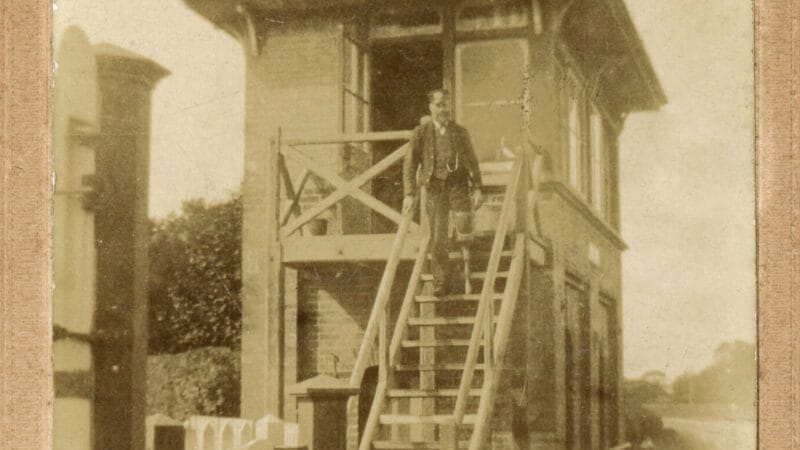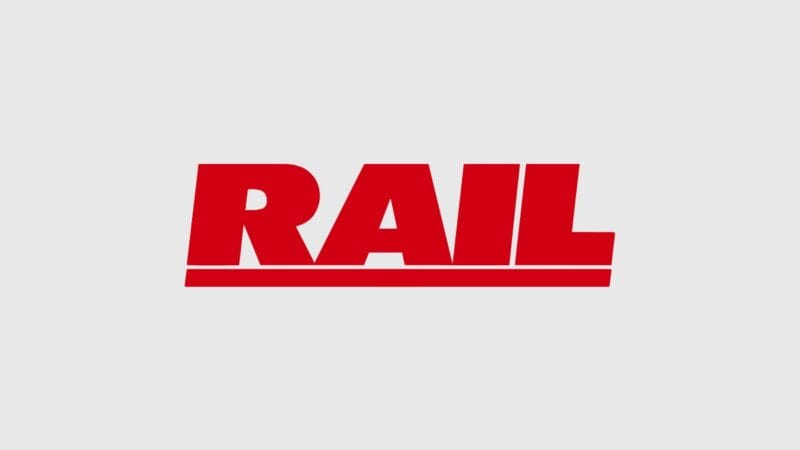Erstmals veröffentlicht im Rail Magazine
Unser letzter Auszug aus Bradleys Eisenbahnführer: Eine Reise durch zwei Jahrhunderte britischer Eisenbahngeschichte, 1825–2025, führt uns ins Jahr 2000 … und zu einem Unfall, der das Gesicht der Eisenbahn verändern sollte.
Das Cover von Private Eye vom 15. Dezember 2000 macht sich über die düstere Lage lustig, in die sich die britische Eisenbahn gerade gestürzt hatte.
Zwei Monate zuvor war in Hertfordshire ein Schnellzug zwischen London und Leeds bei einer Geschwindigkeit von 185 km/h entgleist. Vier Menschen kamen dabei ums Leben. Als Ursache wurde schnell ein Schienenbruch identifiziert.
Elf Monate zuvor waren Mängel an der Schiene entdeckt worden – eine Art Metallermüdung, bekannt als Spurweitenrisse. Die Schiene musste ausgetauscht werden. Doch die Arbeiten erhielten keine ausreichende Priorität, und es kam zu einer Katastrophe.
Der Unfall brachte einige zutiefst gestörte Beziehungen im Zuge der Privatisierung der Eisenbahn ans Licht.
Railtrack, das Unternehmen, das die Strecken, Signale und Bahnhöfe von British Rail übernahm, war im Wesentlichen eine Holdinggesellschaft, die von Das Eisenbahnmagazin nach seinem Niedergang als „kaum mehr als ein Nummernbankkonto zum Einziehen von Zugangsgebühren der TOC (Train Operating Company) und zur Vergabe riesiger Aufträge“.
Gleiserneuerung, Wartung, Inspektion und Überwachung wurden an separate Firmen ausgelagert, die die 13 Unternehmen aufgekauft hatten, in die die Infrastrukturaktivitäten von BR zum Verkauf aufgeteilt worden waren.
Bei einer Inspektion durch einen dieser Auftragnehmer wurde die fehlerhafte Schiene festgestellt, doch ein anderes Unternehmen gewann anschließend die Ausschreibung für den Einbau der Ersatzschiene.
Bevor etwas unternommen werden konnte, musste das erfolgreiche Unternehmen mit Railtrack über den Zeitpunkt und die Dauer der Arbeiten verhandeln.
Aus Sicht von Railtrack mussten derartige Projekte so geplant werden, dass die Strafgebühren, die das Unternehmen bei Verspätungen an die Regulierungsbehörde zahlen musste, möglichst gering gehalten wurden. Fragen der Sicherheit und des Profits standen daher auf beiden Seiten eines zu BR-Zeiten einheitlichen Betriebs im Konflikt.
Schlimmer noch: Der Entgleisung von Hatfield gingen zwei noch tödlichere Katastrophen in den Jahren 1997 und 1999 voraus, beide auf der Great Western Main Line und beide ebenfalls auf Kostensenkungsanreize zurückzuführen, die durch die Privatisierung geschaffen wurden.
Was in den Jahren 2000 und 2001 folgte, beschrieb Sir Alistair Morton, Vorsitzender der neu gegründeten Strategic Rail Authority, als „kollektiven Nervenzusammenbruch“.
Schienen mit ähnlichen Mängeln mussten mit höchster Dringlichkeit identifiziert und repariert werden.
Doch Railtracks Kenntnisse über das eigene Terrain erwiesen sich als völlig unzureichend, da die Arbeiten praktisch an die Infrastrukturunternehmen ausgelagert wurden.
Die Reaktion war daher in keinem Verhältnis zum Risiko, da an fast 2.000 Standorten im gesamten Netzwerk Notfallgeschwindigkeitsbeschränkungen verhängt wurden, bis Kontrollen und Reparaturen durchgeführt werden konnten.
In den Monaten unmittelbar nach Hatfield war das Bahnreisen eine seltsame Angelegenheit.
Die Geschwindigkeiten auf vielen Hauptstrecken sanken auf das Niveau der viktorianischen Zeit. Fahrgäste auf Fernstrecken mussten mehrere Mahlzeiten unterwegs einplanen; Mitte Dezember brauchten Züge von London nach Glasgow immer noch achtdreiviertel Stunden.
Selbst die provisorischen Fahrpläne erwiesen sich oft als unzuverlässig, da die Zuverlässigkeit zusammenbrach. Schwere Regenfälle und Überschwemmungen verschärften die Lage zusätzlich, und ein Erdrutsch führte zur Schließung der Hauptstrecke zwischen Doncaster und York.
Auf lange Sicht erwiesen sich die Folgen des Hatfield-Unfalls als Verhängnis für Railtrack, obwohl bis zu dessen Untergang noch zwei Jahre vergingen.
Wiedergabe mit freundlicher Genehmigung von Bradleys Eisenbahnführer: Eine Reise durch zwei Jahrhunderte britischer Eisenbahngeschichte, 1825–2025 von Simon Bradley.


